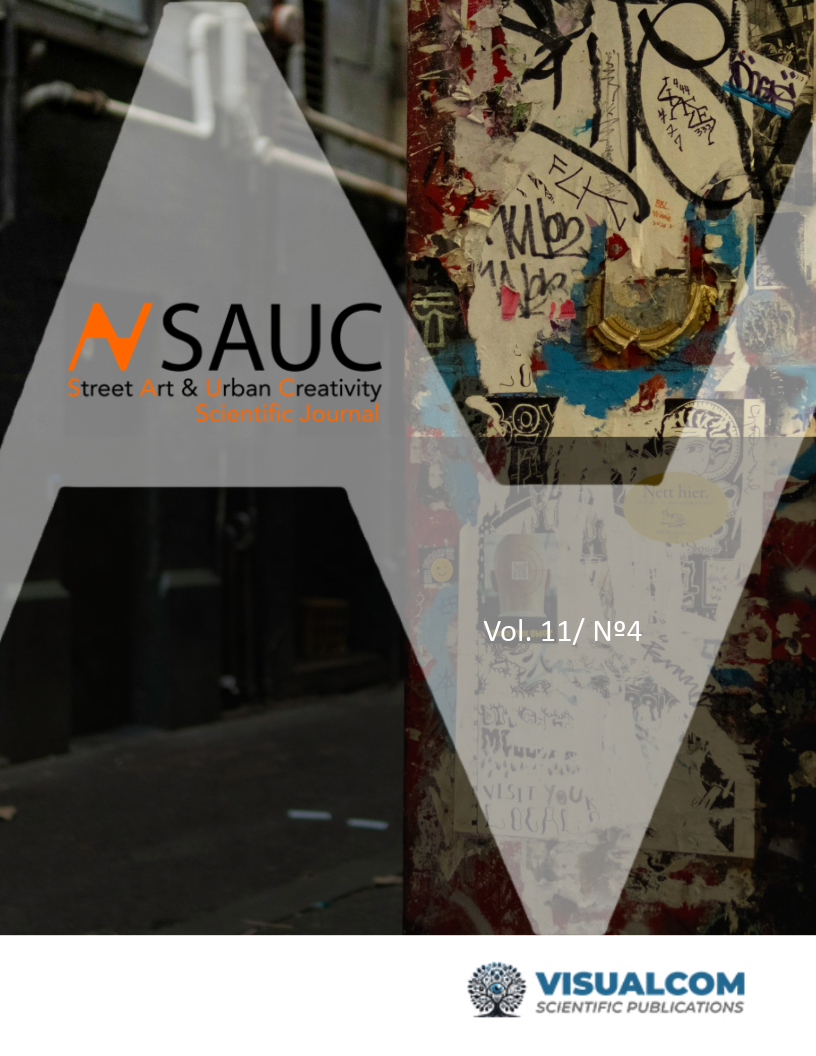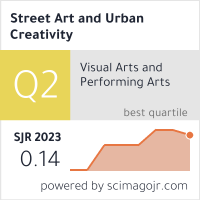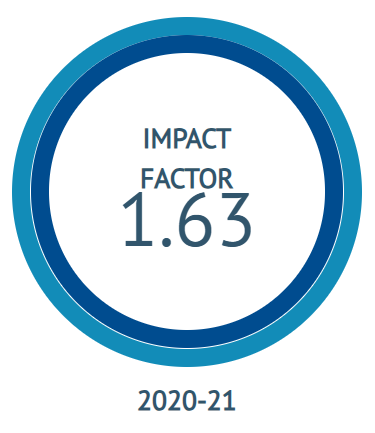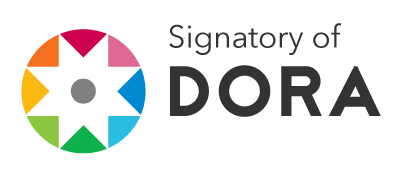Equality and Diversity on X During the 2024 Paris Olympic Games
DOI:
https://doi.org/10.62161/sauc.v11.5815Keywords:
X, Social media, Olympic Games, Inclusion, Diversity, Equality, SportsAbstract
This study examines the conversation on the social media platform X concerning equality and diversity during the Paris 2024 Olympic Games. Through social network analysis and inferential statistics, five major conversation clusters were identified, with transgender-related topics being the most prevalent, yet lacking interaction between users. Additionally, significant positive correlations were found between positive sentiment and the subjectivity of posts and their engagement, while no significant differences were observed between the format of posts (text, image, or video) and their interaction rates. Finally, no evidence of the Boomerang effect was detected on the platform.
Downloads
Global Statistics ℹ️
|
357
Views
|
184
Downloads
|
|
541
Total
|
|
References
Afolaranmi, A. O., & Amodu, A. A. (2022). Critical review of sustainable peace, mediative dialogue and social media. Critical Review, 5(3), 28-43. https://doi.org/10.52589/AJSSHR-34WCGPMN
Ahmadi, I., Waltenrath, A., & Janze, C. (2023). Congruency and users’ sharing on social media platforms: a novel approach for analyzing content. Journal of advertising, 52(3), 369-386. https://doi.org/10.1080/00913367.2022.2055683
Álvarez-Ferrándiz, D., Úbeda-Sánchez, Á. M., & García Fernández-Valdecasas, B. (2023). Propuestas para evitación de un discurso del odio en cada una de sus fases de elaboración. Investigación educativa como factor de avance en las aulas 5.0.-(Educación), 99-109. https://doi.org/10.2307/jj.5076216.13
Aral, S. (2021). The hype machine: How Social Media Disrupts Our Elections, Our Economy, and Our Health--and How We Must Adapt. Currency.
Arguelles, J. J. I., Oberto, C. L. G., Gutiérrez, T. D. J. M., & Rodríguez, R. C. (2024). Implementación de las TICS para fomentar el diálogo en la educación universitaria. Dilemas contemporáneos: Educación, Política y Valores, XII(1), 16. https://doi.org/10.46377/dilemas.v12i1.4277
Bahador, B. (2021). Countering hate speech. In The Routledge companion to media disinformation and populism (pp. 507-518). Routledge. https://doi.org/10.4324/9781003004431-53
Barnes, A. J., & Shavitt, S. (2024). Top Rated or Best Seller? Cultural Differences in Responses to Attitudinal versus Behavioral Consensus Cues. Journal of Consumer Research, 51(2), 276-297. https://doi.org/10.1093/jcr/ucad074
Ben-David, A. (2020). Counter-archiving Facebook. European Journal of Communication, 35(3), 249-264. https://doi.org/10.1177/0267323120922069
Bonilla-del-Río, M., Castillo-Abdul, B., García-Ruiz, R., & Rodríguez-Martín, A. (2022). Influencers With Intellectual Disability in Digital Society: An Opportunity to Advance in Social Inclusion. Media and Communication, 10(1). https://doi.org/10.17645/mac.v10i1.4763
Bozdağ, Ç. (2020). Managing Diverse Online Networks in the Context of Polarization: Understanding How We Grow Apart on and through Social Media. Social Media + Society, 6(3). https://doi.org/10.1177/2056305120975713
Brändle, G., Zapatero, M. D. C., & Rebollo, M. A. P. (2024). Sentir el odio: análisis de la gravedad percibida de los discursos de odio en la población española. RES. Revista Española de Sociología, 33(2), 11. https://doi.org/10.22325/fes/res.2024.219
Castellanos, M., Wettstein, A., Wachs, S., Kansok-Dusche, J., Ballaschk, C., Krause, N., & Bilz, L. (2023). Hate speech in adolescents: A binational study on prevalence and demographic differences. En Frontiers in Education (Vol. 8). Frontiers Media SA. https://doi.org/10.3389/feduc.2023.1076249
Chen, K., Jeon, J., & Zhou, Y. (2021). A critical appraisal of diversity in digital knowledge production: Segregated inclusion on YouTube. New Media & Society, 25(11). https://doi.org/10.1177/14614448211034846
Cinelli, M., Morales, G. D. F., Galeazzi, A., Quattrociocchi, W., & Starnini, M. (2021). The echo chamber effect on social media. Proceedings of the National Academy of Sciences, 118(9), e2023301118. https://doi.org/10.1073/pnas.2023301118
Clauset, A., Newman, M. E. J., & Moore, C. (2004). Finding community structure in very large networks, Physical Review Journals, 70. https://doi.org/10.1103/PhysRevE.70.066111
Delgado, R., & Stefancic, J. (2023). Critical race theory: An introduction (Vol. 87). NyU press. https://doi.org/10.5040/9780567677655.0035
Fletcher, R., Cornia, A., & Nielsen, R. K. (2019). How Polarized Are Online and Offline News Audiences? A Comparative Analysis of Twelve Countries. The International Journal Of Press/Politics, 25(2), 169-195. https://doi.org/10.1177/1940161219892768
Gámez, T. R., & Rodríguez-Casado, R. (2023). Educación social ante los discursos de odio: competencias interculturales en la formación universitaria. Journal of Supranational Policies of Education, (19), 68-83. https://doi.org/10.15366/jospoe2024.19.004
Gardner, A., Love, A., & Waller, S. (2022). How do elite sport organizations frame diversity and inclusion? A critical race analysis. Sport Management Review, 26. https://doi.org/10.1080/14413523.2022.2062975
Gómez-Marí, I., Sanz-Cervera, P., & Tárraga‐Mínguez, R. (2021). Today Is My Day: Analysis of the Awareness Campaigns’ Impact on Functional Diversity in the Press, on Google, and on Twitter. International Journal of Environmental Research and Public Health, 18(15). https://doi.org/10.3390/ijerph18157789
Gregory, A., & Halff, G. (2020). The damage done by big data-driven public relations. Public Relations Review, 46(2), 101902. https://doi.org/10.1016/j.pubrev.2020.101902
Hansen, D., Shneiderman, B., & Smith, M. A. (2010). Analyzing Social Media Networks with NodeXL: Insights from a Connected World. En Graduate Journal of Social Science. https://doi.org/10.1016/B978-0-12-382229-1.00011-4
Hietanen, M., & Eddebo, J. (2023). Towards a definition of hate speech—With a focus on online contexts. Journal of Communication Inquiry, 47(4), 440-458. https://doi.org/10.1177/01968599221124309
Ipar, E., Weglein, L., & Cuesta, M. (2024). Discursos de odio: Una alarma para la vida democrática. UNSAM edita.
Iranzo-Cabrera, M., & Calvo, D. (2023). «¿En qué datos se basa usted para afirmar eso?»: Prácticas culturales contra el discurso de odio en Twitter. En Desórdenes informativos: periodismo, política y ciudadanía ante la desinformación. Gedisa.
Kindermann, D. (2023). Against ‘hate speech’. Journal of Applied Philosophy, 40(5), 813-835. https://doi.org/10.1111/japp.12648
Kluch, Y., & Wilson, A. (2020). #NCAAInclusion: Using Social Media to Engage NCAA Student-Athletes in Strategic Efforts to Promote Diversity and Inclusion. Journal of Sport Communication, 9(1). https://doi.org/10.1123/cssm.2019-0027
Kubin, E., & von Sikorski, C. (2021). The role of (social) media in political polarization: a systematic review. Annals of the International Communication Association, 45(3), 188–206. https://doi.org/10.1080/23808985.2021.1976070
Kulenović, E. (2023). Should Democracies Ban Hate Speech? Hate Speech Laws and Counterspeech. Ethical Theory and Moral Practice, 26(4), 511-532. https://doi.org/10.1007/s10677-022-10336-2
Leal-Fernández, I., & Ruiz San Román, J. A. (2023). Videoactivismo en redes: Credibilidad, viralidad y emocionalidad. Tendencias Sociales. Revista de Sociología, (10), 99–134. https://doi.org/10.5944/ts.2023.37977
Loria, S. (2018). textblob Documentation. https://bit.ly/3GpKCY8
Ma, Y., & Hmielowski, J. D. (2021). Are You Threatening Me? Identity Threat, Resistance to Persuasion, and Boomerang Effects in Environmental Communication. Environmental Communication, 16(2), 225-242. https://doi.org/10.1080/17524032.2021.1994442
Marshall, I. C., Hammer, L. A., Springfield, C., & Bonfils, K. (2022). Activism in the Digital Age: The Link Between Social Media Engagement With Black Lives Matter-Relevant Content and Mental Health. Psychological Reports. https://doi.org/10.1177/00332941221146706
Martín-Cárdaba, M. Á., Carrasco-Polaino, R., & Cuesta-Cambra, U. (2020). Twitter Networks’ Centrality Measures of the Association of Health Journalist (ANIS): the Case of Vaccines-Introduction and Theoretical Framework. European Journal of Social Sciences, 3(2), 12-23.
Mas, J. M., Gómez, A., & Carrero, O. (2023). Emotions in fear communication: A cross‐cultural neuromarketing approach. Psychology And Marketing, 41(4), 697-718. https://doi.org/10.1002/mar.21947
Montells, L. (2016). Engagement en Twitter: qué es y para qué sirve. metricool. https://bit.ly/2JW459A
Nave, E., & Lane, L. (2023). Countering online hate speech: How does human rights due diligence impact terms of service? Computer Law & Security Review, 51. https://doi.org/10.1016/j.clsr.2023.105884
Nizamidou, C. (2022). Provocative products, the boomerang effect, the shooting star crisis and the panacea of workforce diversity. EuroMed Journal of Business, 18(2), 248-269. https://doi.org/10.1108/emjb-05-2021-0067
Ojeda Puig, C. (2021). Exclusión social, entre la aporofobia y la agnotología: tratamiento periodístico de los informes Foessa en el nuevo entorno mediático (2014-2019).
Ostertagová, E., Ostertag, O., & Kováč, J. (2014). Methodology and Application of the Kruskal-Wallis Test. Applied Mechanics and Materials, 611, 115-120. https://doi.org/10.4028/www.scientific.net/AMM.611.115
Picado, E. M., Yurrebaso, A., & Ordaz, R. G. (2023). Respuesta social ante la aporofobia: retos en la intervención social. IDP: revista de Internet, derecho y política= revista d'Internet, dret i política, (37), 3. https://doi.org/10.7238/idp.v0i37.400081
Protopapa, I., & Plangger, K. (2023). Diversity and Inclusion Practices in Marketing Education: A Conceptual Framework and Overview of the Special Issue. Marketing Education Review, 33(1), 1-6. https://doi.org/10.1080/10528008.2023.2173846
Puerta, A. J. F. (2023). Incitación al odio y colectivos vulnerables, del Derecho internacional al Derecho español: especial referencia al delito de incitación al odio por motivos religiosos. Revista de la Facultad de Derecho de México, 73(285), 361-382. https://doi.org/10.22201/fder.24488933e.2023.285.85434
Putriani, I., & Aras, M. (2022). Elevate Company's Social Media as a Diversity, Equity, and Inclusion Platform: Multi Cases Study to Digital Technology Companies. Journal of World Science, 1(10). https://doi.org/10.36418/jws.v1i10.105
Ramón Ortiz, J. Á., & Vilchez Guizado, J. (2023). Discurso de odio en educación secundaria: efectos intelectuales y emocionales. Visual Review, 14(1). https://doi.org/10.37467/revvisual.v10.4600
Ramon, X., & Rojas-Torrijos, J. (2021). Exploring Agenda Diversity in European Public Service Media Sports Desks: A Comparative Study of Underrepresented Disciplines, Sportswomen and Disabled Athletes’ Coverage on Twitter. Journalism Studies, 22(2). https://doi.org/10.1080/1461670X.2020.1809497
Restrepo B, L. F., & González L, J. (2016). De Pearson a Spearman. Revista Colombiana de Ciencias Pecuarias, 20(2), 183-192. https://doi.org/10.17533/udea.rccp.324135
Romero, M. J. G. (2024). El discurso de odio y la protección de derechos fundamentales: Un análisis de su efectividad e impacto en el ámbito laboral. Cuadernos de Res Publica en derecho y criminología, (3), 96-107. https://doi.org/10.46661/respublica.9547
Sánchez-Manzano, J. A., Sánchez-Holgado, P., & Arcila-Calderón, C. (2024). Historia y evolución de los discursos de odio a través de su propagación en los medios audiovisuales durante el siglo XX. Cuadernos del Audiovisual| CAA, (12), 49-73. https://doi.org/10.62269/cavcaa.33
Saveski, M., Beeferman, D., McClure, D., & Roy, D. (2021). Engaging Politically Diverse Audiences on Social Media. Proceedings of the 16th International Conference on Web and Social Media (ICWSM). https://doi.org/10.1609/icwsm.v16i1.19342
Schallhorn, C., Nölleke, D., Sinner, P., Seeger, C., Nieland, J.-U., & Horky, T. (2022). Mediatization in Times of Pandemic: How German Grassroots Sports Clubs Employed Digital Media to Overcome Communication Challenges During COVID-19. Communication & Sport, 10(5), 891-912. https://doi.org/10.1177/21674795221109759
Schmid, U. K., Kümpel, A. S., & Rieger, D. (2024). How social media users perceive different forms of online hate speech: A qualitative multi-method study. New media & society, 26(5). https://doi.org/10.1177/14614448221091185
Schmuck, D. (2021). Following Social Media Influencers in Early Adolescence: Fear of Missing Out, Social Well-Being and Supportive Communication with Parents. Journal Of Computer-Mediated Communication, 26(5), 245-264. https://doi.org/10.1093/jcmc/zmab008
Scott, J. (2017). Social Network Analysis. SAGE Publications. https://doi.org/10.4135/9781529716597
Segura, M. S. (2023). Discursos de odio, desinformación, negacionismos y democracia: Sección Perspectivas. Cuadernos de Coyuntura, 8, 1-6.
Siegel, A. A. (2020). Online hate speech. Social media and democracy: The state of the field, prospects for reform, 56-88. https://doi.org/10.1017/9781108890960.005
Sunstein, C. R. (2021). Liars. En Oxford University Press eBooks. https://doi.org/10.1093/oso/9780197545119.001.0001
Teklu, S. W., & Abebaw, Y. F. (2024). Analysis of the hate speech and racism co-existence dissemination model with optimal control strategies. Chaos, Solitons & Fractals: X, 12, 100109. https://doi.org/10.1016/j.csfx.2024.100109
Vraga, E. K., & Tully, M. (2019). News literacy, social media behaviors, and skepticism toward information on social media. Information, Communication & Society, 24(2), 150–166. https://doi.org/10.1080/1369118X.2019.1637445
Vredenburg, J., Kapitan, S., Spry, A., & Kemper, J. A. (2020). Brands Taking a Stand: Authentic Brand Activism or Woke Washing? Journal Of Public Policy & Marketing, 39(4), 444-460. https://doi.org/10.1177/0743915620947359
Yañez García-Bernalt, I. (2023). Reflexiones sobre los delitos de odio y las víctimas especialmente vulnerables. Revista de Estudios Jurídicos y Criminológicos, (8), 45-78. https://doi.org/10.25267/REJUCRIM.2023.i8.03
Zapatero, M. D. C., Makhortykh, M., & Segado-Boj, F. (2022). Discursos de odio en comunicación: Investigaciones y propuestas. Comunicar: Revista Científica de Comunicación y Educación, (71), 1-4.
Downloads
Published
How to Cite
Issue
Section
License
Copyright (c) 2025 Authors retain copyright and transfer to the journal the right of first publication and publishing rights

This work is licensed under a Creative Commons Attribution-NoDerivatives 4.0 International License.
Those authors who publish in this journal accept the following terms:
-
Authors retain copyright.
-
Authors transfer to the journal the right of first publication. The journal also owns the publishing rights.
-
All published contents are governed by an Attribution-NoDerivatives 4.0 International License.
Access the informative version and legal text of the license. By virtue of this, third parties are allowed to use what is published as long as they mention the authorship of the work and the first publication in this journal. If you transform the material, you may not distribute the modified work. -
Authors may make other independent and additional contractual arrangements for non-exclusive distribution of the version of the article published in this journal (e.g., inclusion in an institutional repository or publication in a book) as long as they clearly indicate that the work was first published in this journal.
- Authors are allowed and recommended to publish their work on the Internet (for example on institutional and personal websites), following the publication of, and referencing the journal, as this could lead to constructive exchanges and a more extensive and quick circulation of published works (see The Effect of Open Access).













